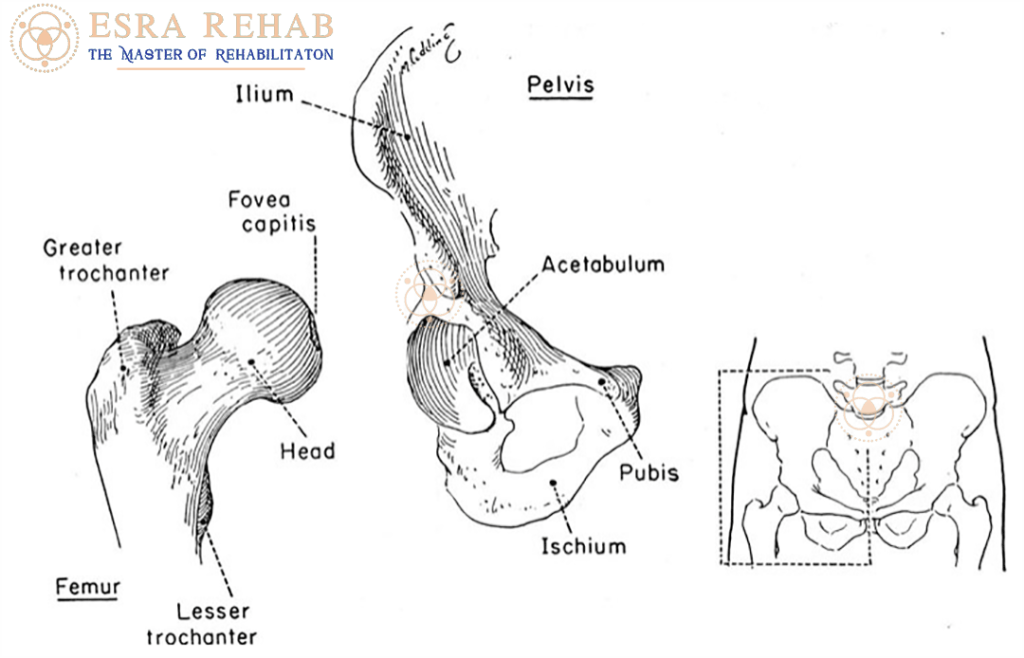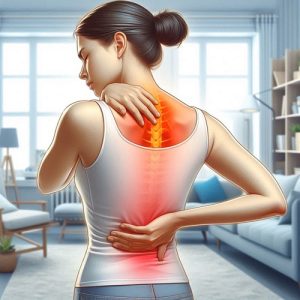Hip Injuries in Athletes: Why Our Hips Are Crucial
The hip is crucial for various reasons:
- Mobility and Stability: The hip joint enables movement, allowing us to walk, run, jump, and perform daily activities. It provides stability and support to the upper body while bearing the body’s weight during movement.
- Core Support: It serves as a pivotal part of the body’s core, connecting the lower body to the upper body. A strong and stable hip area contributes to overall core strength, which is essential for posture, balance, and functional movement.
- Athletic Performance: In athletes, the hip plays a fundamental role in generating power and force during sports activities. Strong and flexible hips are crucial for optimal performance in various sports, including running, jumping, kicking, and pivoting.
- Balance and Coordination: A well-functioning hip joint is essential for maintaining balance and coordination. It helps in stabilizing the body during movements and activities that require precise control.
- Daily Functionality: Basic tasks like standing, sitting, bending, and lifting heavily rely on the hip joint. An efficient hip joint ensures smooth and pain-free movement, enhancing quality of life and functionality.
From the mechanics behind muscle strains to the lesser-known complexities of avulsion fractures, this guide unveils it all.
🔍 Understanding the Complexity: Muscle strain injuries, often stemming from forceful contractions, hold a significant place in athletic injuries. But did you know eccentric contractions primarily cause these strains? Unravel the factors leading to chronic strains and their links to preinjury flexibility.
🦵 Identifying Specific Strains Discover the nuances of adductor strains, iliopsoas muscle strains, and their unique symptoms. Learn to distinguish between different strains, aiding in accurate diagnosis and targeted treatment.
🚶♂️ Beyond Common Injuries Explore lesser-known injuries like osteitis pubis, athletic pubalgia, coxa sultans, acetabular labral tears, and their intricate connections to hip mechanics. Delve into conditions like avascular necrosis and degenerative joint disease that are pivotal in understanding hip health.
📚 Insights and Pathways to Recovery From potential causative mechanisms to proactive measures for prevention, gain insights into a spectrum of injuries and conditions. Understand femoroacetabular impingement (FAI) and its role in the athletic population and discover the mysteries behind avascular necrosis (AVN).
💡 Empowering Athletes Empower yourself with knowledge to recognize, prevent, and seek appropriate care for hip injuries. Understanding these conditions can pave the way for better management and improved athletic performance.
Dive into the intricate world of hip injuries prevalent among athletes like muscle strain injuries, apophyseal injuries, avulsion fractures, and more.
-
Muscle strain injuries are fairly common and occur as a result of forceful contraction of a stretched muscle. Eccentric contraction, or muscle contraction during elongation, is the most frequent type of contraction that causes this injury. A strain is the result of partial tearing of a muscle, generally at the myotendinous junction. Repetitive microtrauma can lead to chronic strains.
- Historically, soccer and hockey players are most prone to adductor strains. Poor adductor strength and conditioning has been found to be a risk factor for adductor strains. Some authors have concluded that decreased preinjury flexibility leads to muscle strain, but recent literature suggests that the two are unrelated.
- Strains to the iliopsoas muscle are an infrequent cause of hip pain. The mechanism of injury is usually a sudden resistance to hip flexion, that is, a collision while attempting to perform a kick. Patients with suspected strain will exhibit pain in the front of the proximal hip that radiates into the groin. Often, there will be a sharp pain in the groin, which increases with resisted hip flexion or passive external rotation. Patients with iliopsoas strains will not have pain or weakness with resisted knee extension, helping distinguish it from strains of the rectus femoris and gracilis muscles.
- Apophyseal injuries and avulsion fractures typically occur in sprinters, jumpers, and soccer and football players. Once thought to be rare, these injuries are more common among the athletic population and comprised greater than 13% of pediatric pelvic fractures in one series. Avulsion injuries are caused by a sudden eccentric contraction of a muscle; however, chronic overuse syndromes can present as apophysitis in the skeletally immature athlete.
- Osteitis pubis is a painful inflammation of the pubic symphysis. This pathology occurs most commonly in the adolescent and early-adult athletic population. Causative mechanisms are not well understood, but investigators believe that the underlying feature involves overuse of the adductors and gracilis muscles. Alternative causes are hypothesized to include microstrains at the origins of these muscles, avascular necrosis (AVN) of the symphysis, osteochondritis desiccans at the symphysis, or fatigue fracture.
- Athletic pubalgia, also termed “Gilmore’s groin” or “sports hernia,” is a broad spectrum of injuries involving the inguinal ligament, conjoined tendon transversalis fascia, internal oblique muscle, external oblique muscle, and rectus abdominis insertion. There is thought to be an imbalance between the adductor muscle group of the thigh and the abdominal musculature, leading to a weakening and possible tearing of the structures of the pelvic floor. This pathology is noted to occur more frequently in males versus females.
- Coxa sultans, more commonly known as “snapping hip,” is a term used to describe several different disease entities. External and internal snapping hip tends to occur in patients in the late teens or early 20s. The common feature of all patients with snapping hip syndrome is that there is a reproducible audible or palpable “snap” with certain hip motion. There are three main categories of coxa sultans: external snapping hip syndrome, internal snapping hip syndrome, and intra-articular snapping hip syndrome.
- Acetabular labral tears have been reported as the most common form of intra-articular pathology in the hip. Increased shear forces in the hip joint have been suggested as a cause for labral tears. Five distinct pathologic entities have recently been linked to this condition: FAI, hip dysplasia, trauma, capsular laxity, and joint degeneration.
- Femoroacetabular impingement (FAI) in the athletic population is thought to be caused by a combination of subtle morphologic variants in the acetabulum and/or proximal femur and use of the hip through an extreme range of motion. Posttraumatic deformities, deepened acetabulum (protrusion or coxa profunda), and acetabular retroversion are thought to be the most common anatomic variants that cause the femoral neck to repeatedly abut against the rim of the acetabulum.
- Avascular necrosis (AVN) of the femoral head in the athletic population is an incompletely understood pathology that frequently affects patients in the third to fifth decade. Interrupted vascular supply secondary to lipid circulation and coagulation pathways are the most commonly cited mechanisms of subchondral bone death. Approximately 80% of cases have a predisposing risk factor, systemic steroid use, hypercoagulable states, and alcoholism, which is the most common.
-
Degenerative joint disease (DJD) can be the final common pathway of many disease processes that affect the hip, including osteoarthritis, traumatic arthritis, congenital hip dysplasia, systemic inflammatory diseases, and AVN.



